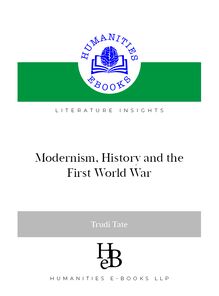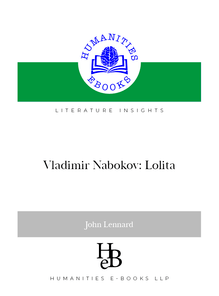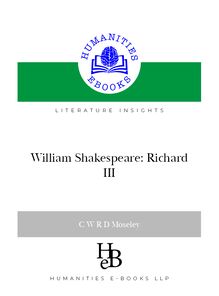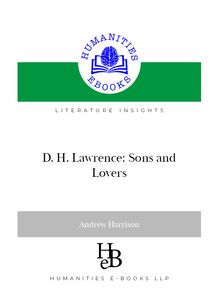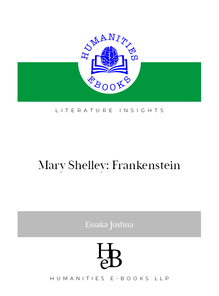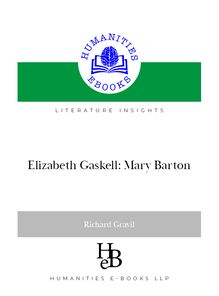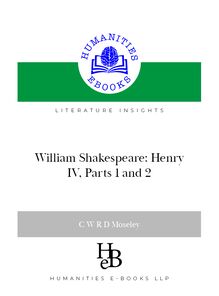-
 Univers
Univers
-
 Ebooks
Ebooks
-
 Livres audio
Livres audio
-
 Presse
Presse
-
 Podcasts
Podcasts
-
 BD
BD
-
 Documents
Documents
-
- Cours
- Révisions
- Ressources pédagogiques
- Sciences de l’éducation
- Manuels scolaires
- Langues
- Travaux de classe
- Annales de BEP
- Etudes supérieures
- Maternelle et primaire
- Fiches de lecture
- Orientation scolaire
- Méthodologie
- Corrigés de devoir
- Annales d’examens et concours
- Annales du bac
- Annales du brevet
- Rapports de stage
La lecture à portée de main
380 pages
English
Découvre YouScribe en t'inscrivant gratuitement
Je m'inscrisDécouvre YouScribe en t'inscrivant gratuitement
Je m'inscris
Obtenez un accès à la bibliothèque pour le consulter en ligne
En savoir plus
En savoir plus
380 pages
English
Obtenez un accès à la bibliothèque pour le consulter en ligne
En savoir plus
En savoir plus

Description
:LOOLDP :RUGVZRUWK 7KH ([FXUVLRQ 7KH 5HFOXVH DQG +(% Ɓ)VNBOJUJFT &CPPLT About this Book hisJT JOefect,UIFirstFEJUJPO PGhe3FDMVTFDPOUBJOT BMM UIBU *U 8PSETXPSUI XSPUF GPS UIF JOUFOEFE UISFF QBSU AQIJMPTPQIJDBM QPFN SBUIFS UIBO GPS JUT BVUPCJPHSBQIJDBM AQPSUJDP MPOH LOPXO BThe1SFMVEF $PNQMFUFE JO A)PNF BU (SBTNFSF XBT QVCMJTIFE JO BT he3FDMVTF 1BSU 'JSTU #PPL 'JSTU UIJT CFJOH UIF PQUJNJTUJD UJUMF JOTDSJCFE VQPO JUT NBOVTDSJQU 'VSUIFS DPNQPTJUJPO JO QSJODJQBMMZ‘he 5VGU PG 1SJNSPTFT BOE o TPNF MVNJOPVT WFSTFT PO /BC 8FMM XBT BMTP JOUFOEFE GPS B TVCTFRVFOU #PPL PS #PPLT PGhe3FDMVTF 1BSU 'JSTU hePOMZ JOTUBMNFOU PGhe3FDMVTFQVCMJTIFE JO 8PSETXPSUI T MJGF UJNF XBT JUT TFDPOE QBSU he&YDVSTJPO XIJDI ,FBUT DPOTJEFSFE POF PG UIF HMPSJFT PG UIF BHF BOE -BNC SFGFSSFE UP BT AB EBZ JO )FBWFO /PUIJOH JT LOPXO PG 8PSETXPSUI T JOUFOUJPOT GPShe3FDMVTF 1BSU hirE FYDFQU UIBU JU NVTU IBWF BEESFTTFE UIF OVNFSPVT JTTVFT MFGU DPO TQJDVPVTMZ VOSFTPMWFE BU UIF FOE PGhe EYDVSTJPO Humanities-Ebooks )VNBOJUJFT &CPPLT QVCMJTIFT QSJNBSJMZ JO FMFDUSPOJD GPSN BOE JUT &CPPLTBSF BWBJMBCMF UP QSJWBUF QVSDIBTFST FYDMVTJWFMZ GSPNIUUQ XXX IVNBOJUJFT FCPPLT DP VLUP MJCSBSJFT GSPN 4$0 &CSBSZ BOE BOE *OHSBN %JHJUBM heQBQFSCBDL WFSTJPO PG UIJT CPPL JT BWBJMBCMF GSPN BMM CPPLTFMMFST CVU BU B EJTDPVOU GSPN -VMV DPN CZ VTOH UIF MJOL GSPN )VNBOJUJFT &CPPLT :LOOLDP :RUGVZRUWK 7KH ([FXUVLRQDQG7KH 5HFOXVH +(% Ɓ Humanities-Ebooks, LLP ª
Sujets
Informations
| Publié par | Humanities eBooks |
| Date de parution | 11 janvier 2021 |
| Nombre de lectures | 3 |
| EAN13 | 9781847603425 |
| Langue | English |
| Poids de l'ouvrage | 1 Mo |
Informations légales : prix de location à la page 0,0500€. Cette information est donnée uniquement à titre indicatif conformément à la législation en vigueur.
Extrait
William Wordsworth
The Excursion The Recluse and
HEB☼Humanities-Ebooks
About this Book
hIsis, inefect,theirstedition ofheReclusecontains all that. It Wordsworth wrote for the intended three-part ‘philosophical poem’, rather than for its autobiographical ‘portico’ long known ashePrelude. Completed in 1806, ‘Home at Grasmere’ was published in 1886 as heRecluse, Part First, Book First, this being the optimistic title inscribed upon its manuscript. Further composition, in 1808 (principally‘he Tuft of Primroses’) and 1825–26 (some luminous verses on Nab Well), was also intended for a subsequent Book or Books ofheRecluse, Part First. heonly instalment ofheReclusepublished in Wordsworth’s life-time was its second part,heExcursion(1814),which Keats considered one of the glories of the age, and Lamb referred to as ‘a day in Heaven’. Nothing is known of Wordsworth’s intentions forheRecluse, Part hird, except that it must have addressed the numerous issues left con-spicuously unresolved at the end ofhe Excursion.
Humanities-Ebooks
Humanities-Ebooks publishes primarily in electronic form and its Ebooksare available to private purchasers exclusively fromhttp://www. humanities-ebooks.co.ukto libraries from EBSCO, Ebrary and and Ingram Digital.
hepaperback version of this book is available from all booksellers but at a discount from Lulu.com by usng the link from Humanities-Ebooks.
William Wordsworth
The ExcursionandThe Recluse
HEB☼Humanities-Ebooks, LLP
© Jared Curtis, 2014
heAuthor has asserted his right to beIdentIiedas the author of this Work in accordance with the Copyright, Designs and Patents Act 1988.
First published byHumanities-Ebooks, LLP, Tirril Hall, Tirril, Penrith CA10 2JE.
Cover image, the Langdale Pikes from above the Solitary’s Cottage © Richard Gravil
hereading texts of Wordsworth’s poems used in this volume are from the Cornell Wordsworth series, published by Cornell University Press, Sage House, 512 East State Street, Ithaca, NY 14850. Copyright © Cornell University. Volumes are available at:http://www.cornellpress. cornell.edu
hereading texts are also collected inhePoems of William Wordsworth: Collected Reading Texts from the Cornell Wordsworth, 3 vols, edited by Jared Curtis (Humanities-Ebooks, 2009).
A one volume PDF Ebook containing the three volumes and an Addendum is available exclusively fromhumanities-ebooks.co.uk.
ISBN 978-1-84760-342-5 PDF Ebook ISBN 978-1-84760-343-2 Paperback
1
Wordsworth’s Notes Select Bibliography
6 0
therecluse, Partsecond The Excursion(1814) [Poemsextractedfromtheexcursion] [The Peasant’s Life] [The Shepherd of Bield Crag]
Preface Hart-leap Well
Poemsfromthe1798 ‘recluse’ The Old Cumberland Beggar, A Description A Fragment [A Night-Piece] therecluse, Partfirst, Bookfirst Home at Grasmere (1800–1806) furtherWritingfortherecluse, Partfirst To the Clouds (1808) The Tuft of Primroses (1808) [St. Paul’s] (1808) Composed when a probability existed of our being obliged to quit Rydal Mount as a Residence (1826)
7
7
8 4
5 5 7
Contents
359 377
354 357
1 2
8
4
6 8 5
2
6
Preface
This book contains all that can be conîdently assigned to Wordsworth’s înal conception of his unînished philosophical poem, ‘The Recluse’. It contents are selected from Jared Curtis’sThe Poems of William Wordsworth:Collected Reading Texts from the Cornell Wordsworth, published by Humanities-Ebooks in 2009. Writing to James Tobin on 6 March 1798, Wordsworth made his îrst epistolary reference to ‘The Recluse, or Views of Nature, Man and Society’ (the poem’s working title being bestowed îve days later in a letter to Jame Losh):
I have written 1300 lines of a poem in which I contrive to convey most of the knowledge of which I am possessed. My object is to give pic-tures of Nature, Man, and Society. Indeed I know not any thing which will not come within the scope of my plan. . . . the work of composition 1 is carved out for me, for at least a year and a half to come.
What became of that grandiose ambition over the next thirty years is too complex a story to follow here. It has been told by John Alban Finch, Mark Reed, James Butler, Jonathan Wordsworth, Sally Bushell, and others in works listed in this book’s Select Bibliography. Essentially, it was to be a poem in three parts, prefaced by a fourth poem of epic length,The Prelude. The three Parts of ‘The Recluse’ proper would have been uniîed by an attempt to esh out the remark-able view of mankind’s potential outlined in the so-called ‘Prospectus to The Recluse’, which forms the climax of ‘Home at Grasmere’ and was published with some revision in the Preface toThe Excursion. According to that Preface, ‘The Recluse’ would have had ‘for its principal subject the sensations and opinions of a Poet living in retirement’, which account harmonises with Coleridge’s judgment,
1The Letters of William and Dorothy Wordsworth. The Early Years,2nd edn, ed. Ernest de Selincourt, rev. Chester L. Shaver (Oxford: Clarendon Press, 1967)., 212.
‘The Recluse’
7
in 1804, that ‘I prophesy immortality to his “Recluse”, as the îrst and înest philosophical poem, if only it be … a faithful transcript of his own most august and innocent life, of his own habitual feel-1 ings and modes of seeing and hearing.’Recluse, Part First, ‘The Book First’, also entitled ‘Home at Grasmere’, was indubitably such 2 a ‘transcript’. It occupied Wordsworth intermittently from 1800 to 1806, spanning most of the period during whichThe Preludewas also composed, which may explain whyThe Preludepre-empts much of the argument intended for ‘The Recluse’. It is, altogether, one of Wordsworth’s most ecstatic performances, but it proved a very hard act to follow. It has never been clear to anybody how Wordsworth would have tackled another six, seven, or eight Books of ‘The Recluse, Part First’. In 1808, however, Wordsworth did produce some further pieces of composition, ‘To the Clouds’, ‘The Tuft of Primroses’ and ‘St. Paul’s’, which appear to have been intended for one further ‘Book’ of ‘The Recluse, Part First’. Later still, in 1826, having composed some verses on Nab Well (‘Composed when a probability existed’), Wordsworth told Henry Crabb Robinson that these lines were ‘to be an introduction to a portion of his great poem’ containing ‘a poetical 3 view of water as an element in the composition of our globe’.All four of these shorter pieces, included in this volume, are as edited by Joseph F. Kishel inThe Tuft of Primroses and other Late Poems for ‘The Recluse’(Ithaca, NY: Cornell University Press, 1986). To these I have added two further poems. The ‘1300 lines’ referred to in Wordsworth’s letter of March 1798 included ‘a version of ‘The Ruined Cottage’, ‘A Night Piece’, ‘The Old Cumberland Beggar’, 4 and ‘The Discharged Soldier’. Of these, ‘The Ruined Cottage’ found a place in Wordsworth’s masterly tripartite version of Margaret’s and
1Collected Letters of Samuel Taylor Coleridge, ed. Earl Leslie Griggs, 6 vols (Oxford: Clarendon Press, 1956–71), 4: 574. 2 The text of ‘Home at Grasmere’ presented in this volume is that of the Cornell WordsworthHome at Grasmere, edited by Beth Darlington (Ithaca NY: Cornell University Press, 1977). 3 Henry Crabb Robinson,Diary, Reminiscences, and Correspondence, ed. Thomas Sadler, 3rd edn, 2 vols (London: Macmillan and Co., 1872), 2: 364. 4 Kenneth R. Johnston,Wordsworth and ‘The Recluse’(New Haven and London: Yale University Press, 1984), 5–6.
8
Writing for ‘The Recluse’
her narrator’s tale in Book I ofThe Excursion, while ‘The Discharged Soldier’ was assigned to Book IV ofThe Prelude. Since, however, Wordsworth’s îrst conception of ‘The Recluse’was clearly dominated by a poetry studying human beings in extreme siituations, it seems reasonable to înd room in this volume for ‘The Old Cumberland Beggar’. And ‘A Night Piece’, though somewhat extraneous among the ‘1300 lines’, seems like a dress rehearsal for ‘To the Clouds’ and St Paul’s’. I have therefore included both of these ‘ur-Recluse’ poems under the geneal rubric of ‘Poems from the 1798 Recluse’. ‘The Recluse, Part Second’was published in 1814 asThe Excursion. It adopts, as Wordsworth’s preface says, ‘something of a dramatic form’ in narrating, îrst, the tragedy of Margaret, and then in eight further Books, the attempts of three characters, a Poet (who is and is not Wordsworth), a Wanderer (ditto) and a Pastor, to cure a fourth character, the Solitary (to whom Wordsworth gifts much of his own darkest experience) of his ‘dejection’ and as the Solitary himself puts it (3: 694) his dependence. In this second ‘Part’, Wordsworth appears to be responding to Coleridge’s somewhat confusing exhortation in September 1799, that apart from, or alongside, or even as part of, writing ‘The Recluse’, Wordsworth should embark on
a poem, in blank verse, addressed to those, who in consequence of the complete failure of the French Revolution, have thrown up all hopes of the amelioration of mankind …It would do great good, and 1 might form a part of ‘The Recluse’.
‘The Recluse, Part Third’ has not even vestigial existence. Wordsworth confessed to George Ticknor in 1838 that all extant com-position for ‘The Recluse’ was intended for ‘Part First’ and that ‘Part 2 Third’ was ‘untouched’. It would appear logical to suppose that ‘Part Third’ must have taken up on personal and philosophical grounds the problems left unresolved in the dialogue of ‘Part Second’, as indeed the concluding lines ofThe Excursionsuggest, but no (9:782–95) sketch is known to have existed. Interestingly, however, Wordsworth
1Collected Letters of Samuel Taylor Coleridge, ed. Earl Leslie Griggs, 6 vols (Oxford: Clarendon Press, 1956–71), 1: 527. 2The Letters of William and Dorothy Wordsworth: The Later Years, 2nd edn, ed. Alan G. Hill, 4 vols (Oxford: Clarendon Press, 1978–88), 3: 583n.
‘The Recluse’ 9
excuses himself for publishing Part 2 before Part 1 or Part 3 on the grounds that ‘as the second division of the Work was designed to refer more to passing events, and to an existing state of things, than the others were meant to do, more continuous exertion was natu-rally bestowed upon it, and greater progress made here than in the rest of the Poem’. It may be legitimate to deduce from this way of putting things that ‘Part Third’ might have set out to portray a better ‘state of things’ and to justify the optimism about mankind’s poten-tial indulged so rapturously in ‘Home at Grasmere’. It must also have shown how, as promised in the ‘Prospectus’, to a mind wedded to this world, ‘paradise and groves elysian’ may be ‘a simple produce of the common day’. ‘Home at Grasmere’ itself appears to ground its optimistic faith in a vision or ‘trance’ experienced at Hart-Leap Well, while William and Dorothy were journeying to Grasmere. There they received, or so ‘Home at Grasmere’ claims, ‘The intimation of the milder day / Which is to come, the fairer world than this’. For this reason, ‘Hart-leap Well’, îrst published inLyrical Ballads(1800), and the only poem mentioned in either ‘Home at Grasmere’ orThe Excursion, is included here as a poetical epigraph to ‘The Recluse’. It remains to express my gratitude to Jared Curtis, whose three-volume collection ofThe Poems of William Wordsworth: Collected Reading Texts from the Cornell Wordsworth(Humanities-Ebooks 2009–14) has made possible what is, in effect, this îrst edition ofThe Recluse, and of course to the editors and publishers of the Cornell Wordsworth. This volume has no ‘editor’, because it has involved no editing.
Richard Gravil, Tirril, 2014
10
The Excursion&The Recluse
1 Hart-leap Well
Hart-leap Well is a small spring of water, about îve miles from Richmond in Yorkshire, and near the side of the road which leads from Richmond to Askrigg. Its name is derived from a remarkable chace, the memory of which is preserved by the monuments spoken of in the second Part of the following Poem, which monuments do now exist as I have there described them.
The Knight had ridden down from Wensley Moor With the slow motion of a summer’s cloud; He turn’d aside towards a Vassal’s door, And, “Bring another Horse,” he cried aloud.
“Another Horse.”—That shout the Vassal heard, And saddled his best steed, a comely Grey: Sir Walter mounted him; he was the third Which he had mounted on that glorious day.
Joy sparkled in the prancing Courser’s eyes; The horse and horseman are a happy pair; But, though Sir Walter like a falcon ies, There is a doleful silence in the air.
A rout this morning left Sir Walter’s Hall, That as they gallop’d made the echoes roar; But horse and man are vanish’d, one and all; Such race, I think, was never seen before.
Sir Walter, restless as a veering wind, Calls to the few tired dogs that yet remain:
1
1
5
0
5
1 This poem is included in the volume because of its privileged mention inHome at Grasmere,lines 236-239. The text is from POems of William Wordswoth, Volume 1, and is that of ‘Lyrical Ballads’ and other Poems, 1797–1800,ed. James Butler and Karen Green (Ithaca NY: Cornell University Press, 1992).
-
 Univers
Univers
-
 Ebooks
Ebooks
-
 Livres audio
Livres audio
-
 Presse
Presse
-
 Podcasts
Podcasts
-
 BD
BD
-
 Documents
Documents
-
Jeunesse
-
Littérature
-
Ressources professionnelles
-
Santé et bien-être
-
Savoirs
-
Education
-
Loisirs et hobbies
-
Art, musique et cinéma
-
Actualité et débat de société
-
Jeunesse
-
Littérature
-
Ressources professionnelles
-
Santé et bien-être
-
Savoirs
-
Education
-
Loisirs et hobbies
-
Art, musique et cinéma
-
Actualité et débat de société
-
Actualités
-
Lifestyle
-
Presse jeunesse
-
Presse professionnelle
-
Pratique
-
Presse sportive
-
Presse internationale
-
Culture & Médias
-
Action et Aventures
-
Science-fiction et Fantasy
-
Société
-
Jeunesse
-
Littérature
-
Ressources professionnelles
-
Santé et bien-être
-
Savoirs
-
Education
-
Loisirs et hobbies
-
Art, musique et cinéma
-
Actualité et débat de société
- Cours
- Révisions
- Ressources pédagogiques
- Sciences de l’éducation
- Manuels scolaires
- Langues
- Travaux de classe
- Annales de BEP
- Etudes supérieures
- Maternelle et primaire
- Fiches de lecture
- Orientation scolaire
- Méthodologie
- Corrigés de devoir
- Annales d’examens et concours
- Annales du bac
- Annales du brevet
- Rapports de stage
Signaler un problème
YouScribe
Le catalogue
Le service
© 2010-2024 YouScribe
